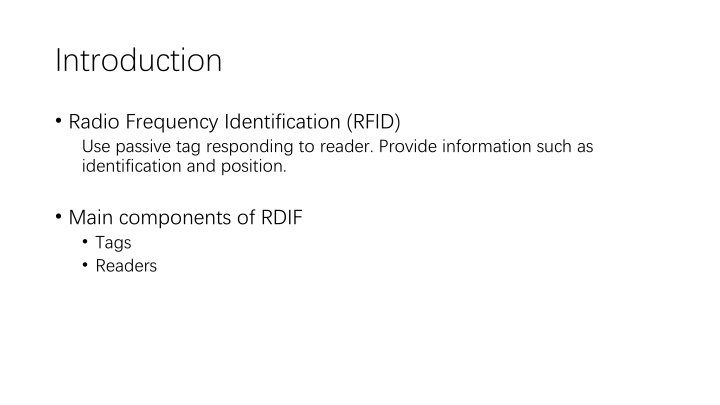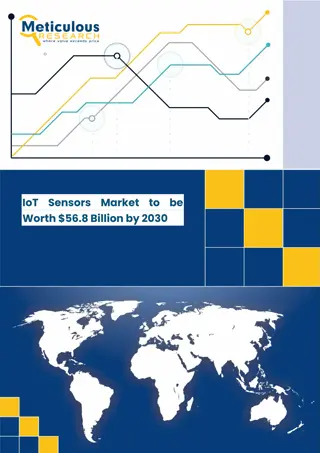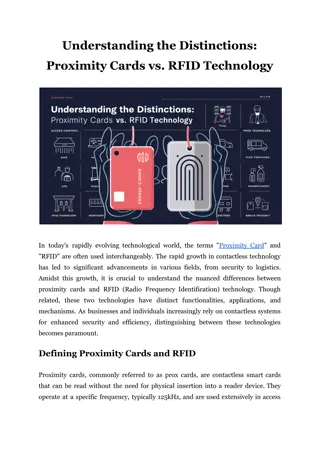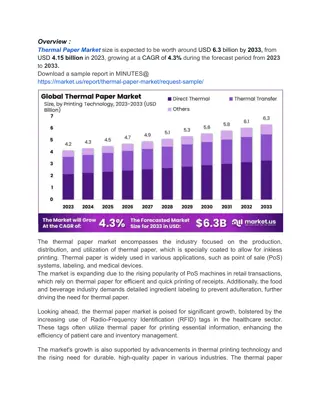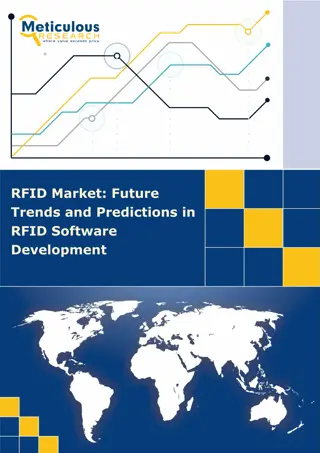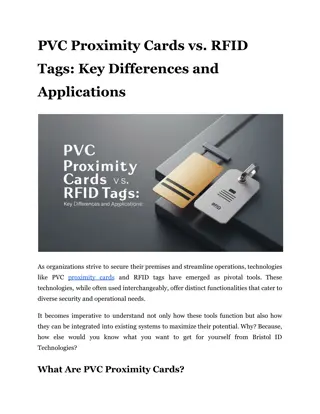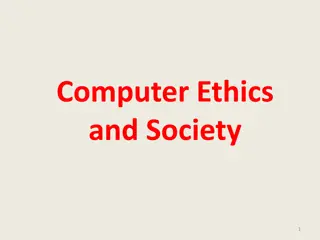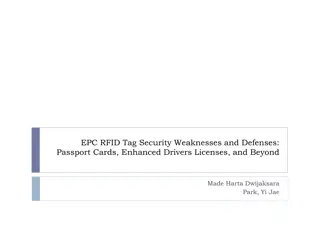Comprehensive Overview of RFID Technology and Challenges
Radio Frequency Identification (RFID) technology utilizes passive tags to provide identification and positioning data. The main components of RFID tags and readers are crucial for efficient operation. However, the technology faces challenges such as ambiguous phase cycles, self-jamming, bandwidth limitations, and phase errors induced by multi-paths. Solutions like self-jamming elimination and advanced algorithms like HMFCW Ranging and 3D Localization play a vital role in overcoming these obstacles.
Download Presentation

Please find below an Image/Link to download the presentation.
The content on the website is provided AS IS for your information and personal use only. It may not be sold, licensed, or shared on other websites without obtaining consent from the author.If you encounter any issues during the download, it is possible that the publisher has removed the file from their server.
You are allowed to download the files provided on this website for personal or commercial use, subject to the condition that they are used lawfully. All files are the property of their respective owners.
The content on the website is provided AS IS for your information and personal use only. It may not be sold, licensed, or shared on other websites without obtaining consent from the author.
E N D
Presentation Transcript
Introduction Radio Frequency Identification (RFID) Use passive tag responding to reader. Provide information such as identification and position. Main components of RDIF Tags Readers
Present problems The ambiguous phase cycles Self-jamming and bandwidth limitation Large phase error induced by multi-paths:
Ambiguous phase cycles Since the measured phase is always within [0, 2 ), cycle ambiguity exists when the distance is longer than one wavelength. When the measured phase is , the actual phase can be +2n where n is the cycle integer. The cycle integer must be solved correctly in order to reduce ambiguity in the 3D location.
Self-jamming and bandwidth limitation Two mainly leakage signals Direct leakage Reflection from antenna Bode-Fano criteria
Phase error induced by multi-paths Multi-paths will cause large phase error, Which will also leads to ambiguous phase cycle.
Self-jamming elimination Produce second or higher-order harmonics passive respond Use LPF/HPF to filter selected frequencies.
HMFCW Ranging Algorithm They prove that when , the n can be 100% reliable. They prove that So, when the bandwidth is unlimited, the tolerance of multi-path phase error can be very large (about -45 ~45
3D Localization Algorithm each ranging result is a differential distance from a tag to two Rx antennas at different position, in 3D space, one differential distance measurement gives a hyperboloid. Solve the problem with Fletcher-Reeves nonlinear conjugate gradient (CG) method.
